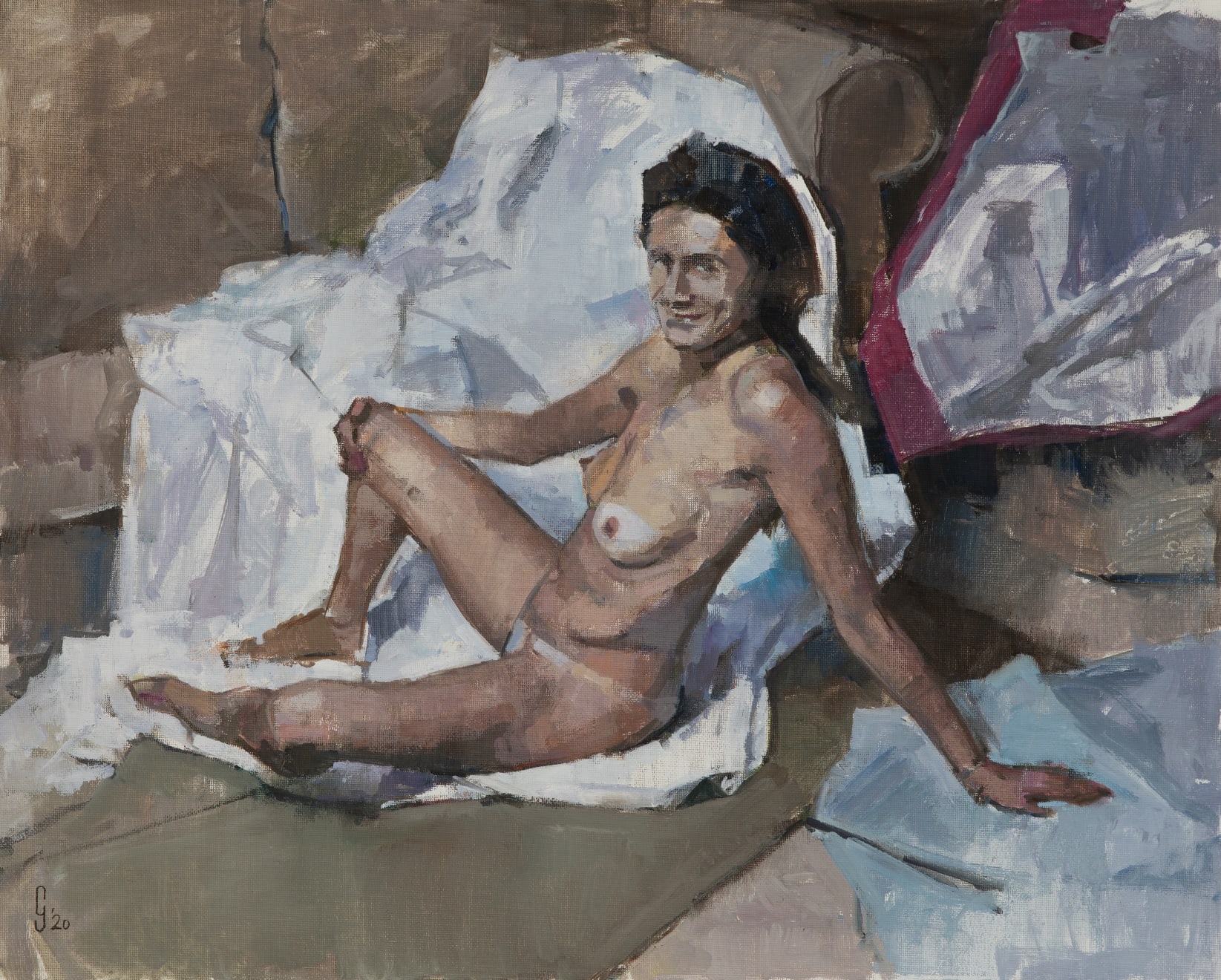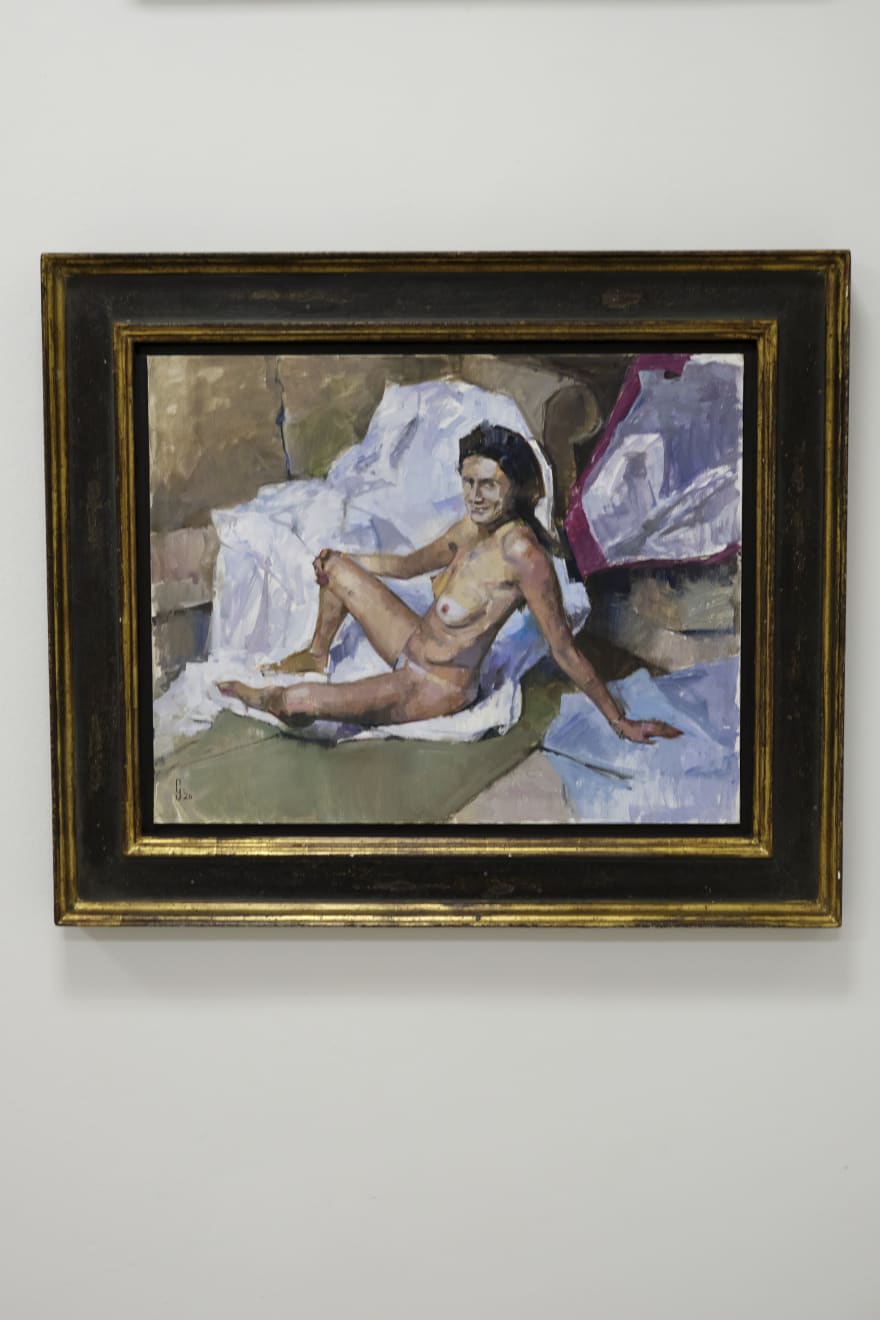Andrew Gow British, b. 1978
Further images
Through 'The Damsel', Andrew Gow invites the viewer into a world where appearances deceive, and the true power lies beneath the surface, challenging the traditional narrative and offering a fresh perspective on the age-old story of St. George and the dragon.
The Damsel painting, crafted with meticulous attention to detail and profound insight by Andrew Gow, stands as a testament to the artist's ability to delve into the intricacies of human nature and societal norms.
This painting is not just a visual delight but a study, a prelude to the 'Oh no! It's George!' masterpiece, providing a unique lens through which the viewer can decipher the story of the Damsel in Distress, a common trope in the tale of St. George and the dragon.
In the legendary myth, St. George gallantly slays the dragon, rescuing the Damsel in distress, who is traditionally perceived as the prize for his bravery. However, with a stroke of genius, Gow subverts this narrative right from the inception of 'Oh No! It's George!'. Far from being a passive victim, the Damsel emerges as the puppeteer of the entire saga. Contrary to the archetype of the virtuous Damsel, she is the architect of her own salvation, cunningly manipulating the knight, George.
The portrayal of the Damsel is captivating and provocative; she is depicted in the nude, her legs positioned suggestively on a bath towel, using her physical allure to ensnare George, the successful corporate businessman. In this twisted tale, the dragon becomes collateral damage, an unwitting participant in the Damsel's elaborate scheme.
The origins of this painting trace back to a series of photographs taken by Gow, which served as the foundation for this piece. The model, a tumultuous figure from the artist's past whose identity remains shrouded in mystery, embodied the role of the manipulative Damsel with a natural ease and understanding. She assumed a seductive pose, her gaze locked with the viewer as if to share a secret, a silent acknowledgement of her control over the unfolding events.
The painting, while intricately connected to the 'Oh No! It's George!' narrative stands alone as a studio painting, complete with all the accoutrements of an artist's workspace. The viewer is drawn to the discarded overcoat, casually strewn on the sofa, a subtle nod to the studio setting. Yet, the composition of the piece and the careful positioning of the Damsel all serve as a study for the grand narrative unfolding in the subsequent painting.









